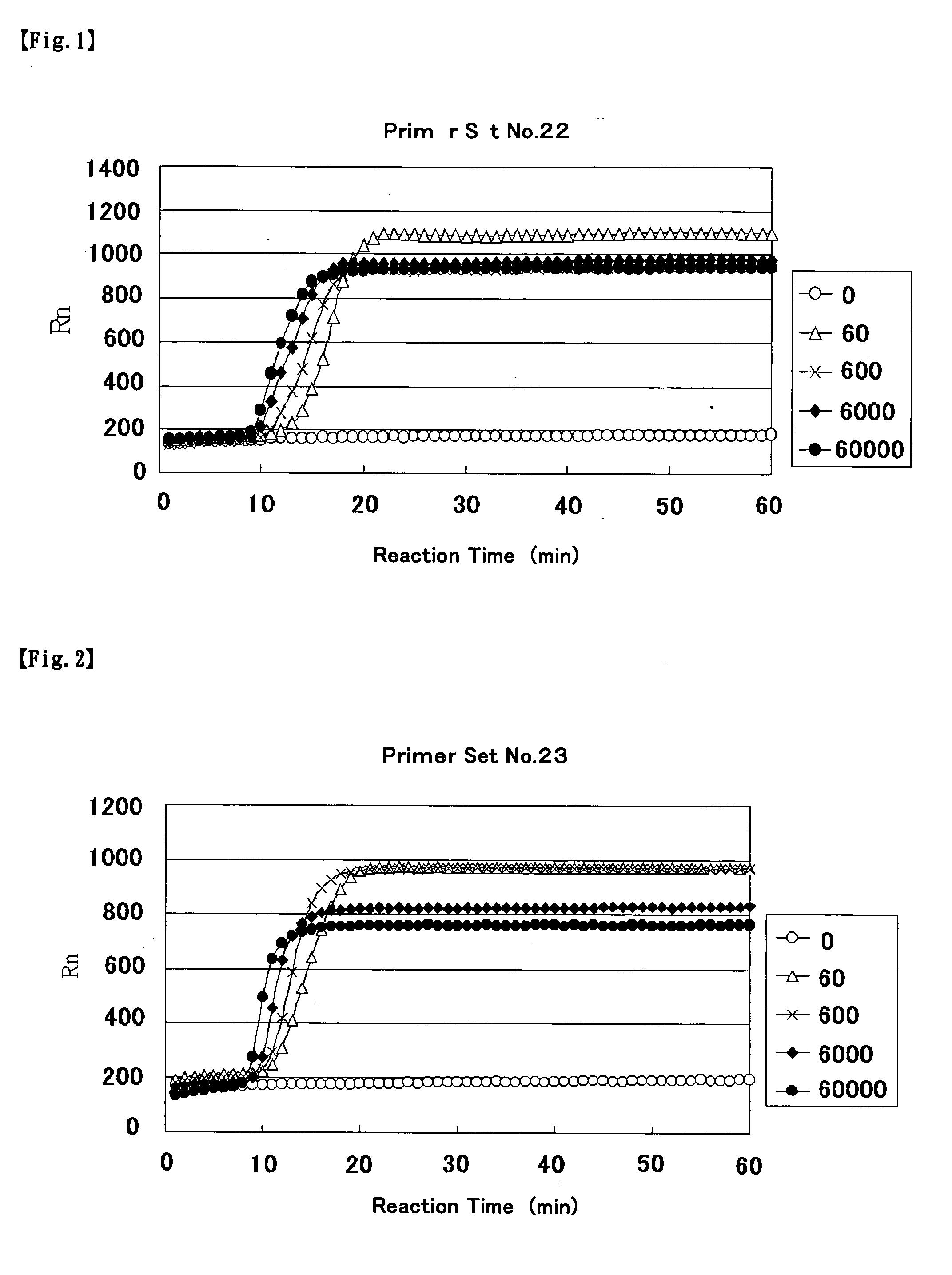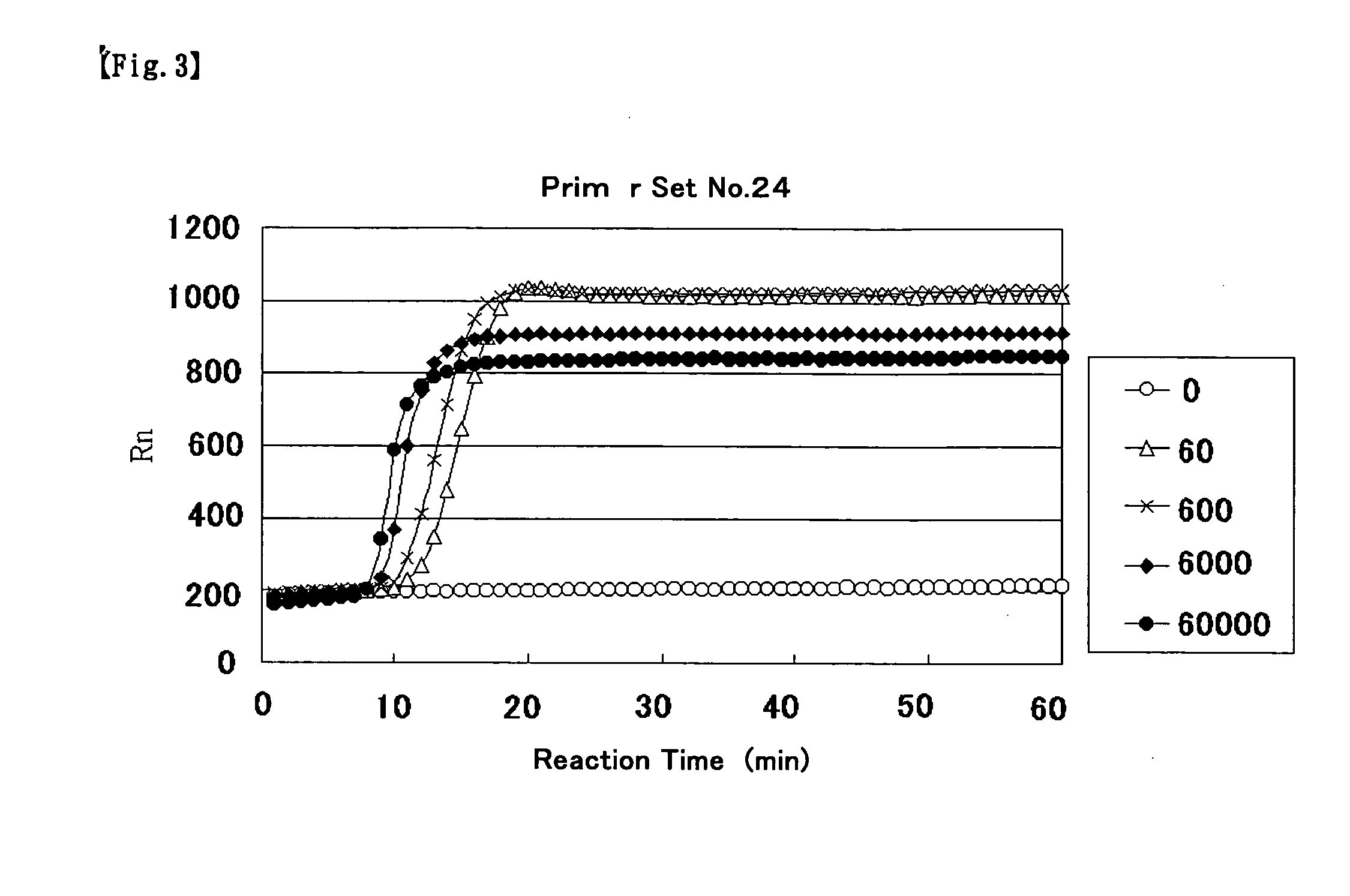Primer for nucleic acid amplification to detect carcinoembryonic antigen and test method using such primer
a nucleic acid amplification and carcinoembryonic antigen technology, applied in the field of primers for nucleic acid amplification to detect carcinoembryonic antigen and test methods using such primers, can solve the problem of taking about 2 hours to obtain a detectable amplified produ
- Summary
- Abstract
- Description
- Claims
- Application Information
AI Technical Summary
Benefits of technology
Problems solved by technology
Method used
Image
Examples
Embodiment Construction
[0118] The present invention is illustrated in the following Example, but is not limited to these examples.
[0119] Selection of Region
[0120] With respect to the base sequence for human CEA set out in SEQ ID No. 1, the position of a suitable range in the LAMP method was studied using probe design software. As a result thereof, a Tm value of 58.5 to 63.5.degree. C. for the region of F1c and R1c, a Tm value of 61.5 to 62.5.degree. C. for F2 and R2, and a Tm value of 58.5 to 62.5.degree. C. for F3 and R3, the following particulars were selected. The selected regions are included in the region of Nos. 1900 to 2200 of the base sequence set out in SEQ ID No. 1 and its complementary strand.
[0121] F1c: Region of the strand complementary to the base position in the sequence set out in SEQ ID No. 1:
[0122] Nos. 2054-2034 (SEQ ID No. 2)
[0123] F2: Region of the base position on the sequence set out in SEQ ID No. 1:
[0124] Nos. 1951 to 1966 (SEQ ID No. 3)
[0125] Nos. 1952 to 1968 (SEQ ID No. 4)
[0126]...
PUM
| Property | Measurement | Unit |
|---|---|---|
| Tm | aaaaa | aaaaa |
| Tm | aaaaa | aaaaa |
| temperature | aaaaa | aaaaa |
Abstract
Description
Claims
Application Information
 Login to View More
Login to View More - R&D
- Intellectual Property
- Life Sciences
- Materials
- Tech Scout
- Unparalleled Data Quality
- Higher Quality Content
- 60% Fewer Hallucinations
Browse by: Latest US Patents, China's latest patents, Technical Efficacy Thesaurus, Application Domain, Technology Topic, Popular Technical Reports.
© 2025 PatSnap. All rights reserved.Legal|Privacy policy|Modern Slavery Act Transparency Statement|Sitemap|About US| Contact US: help@patsnap.com


